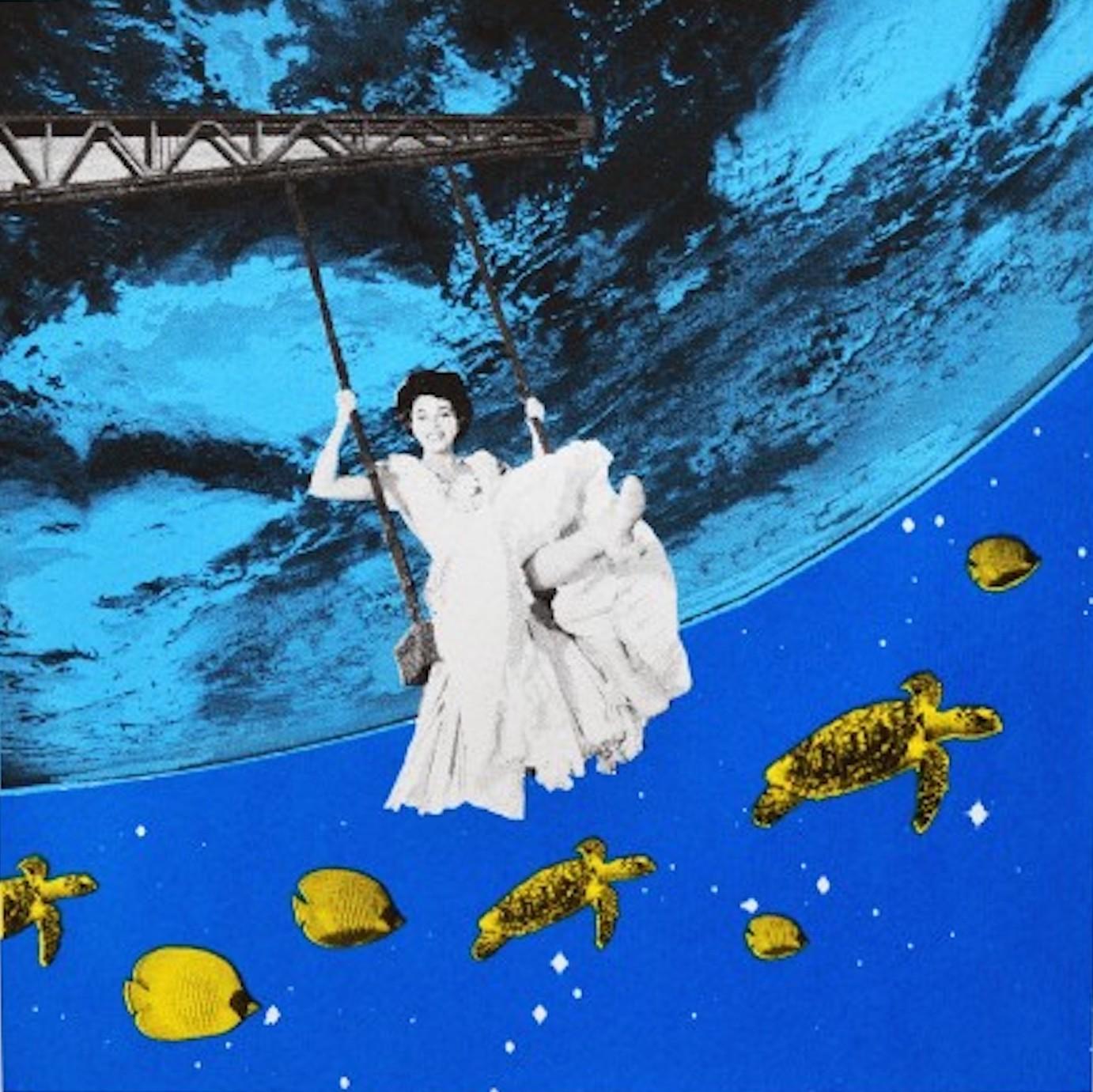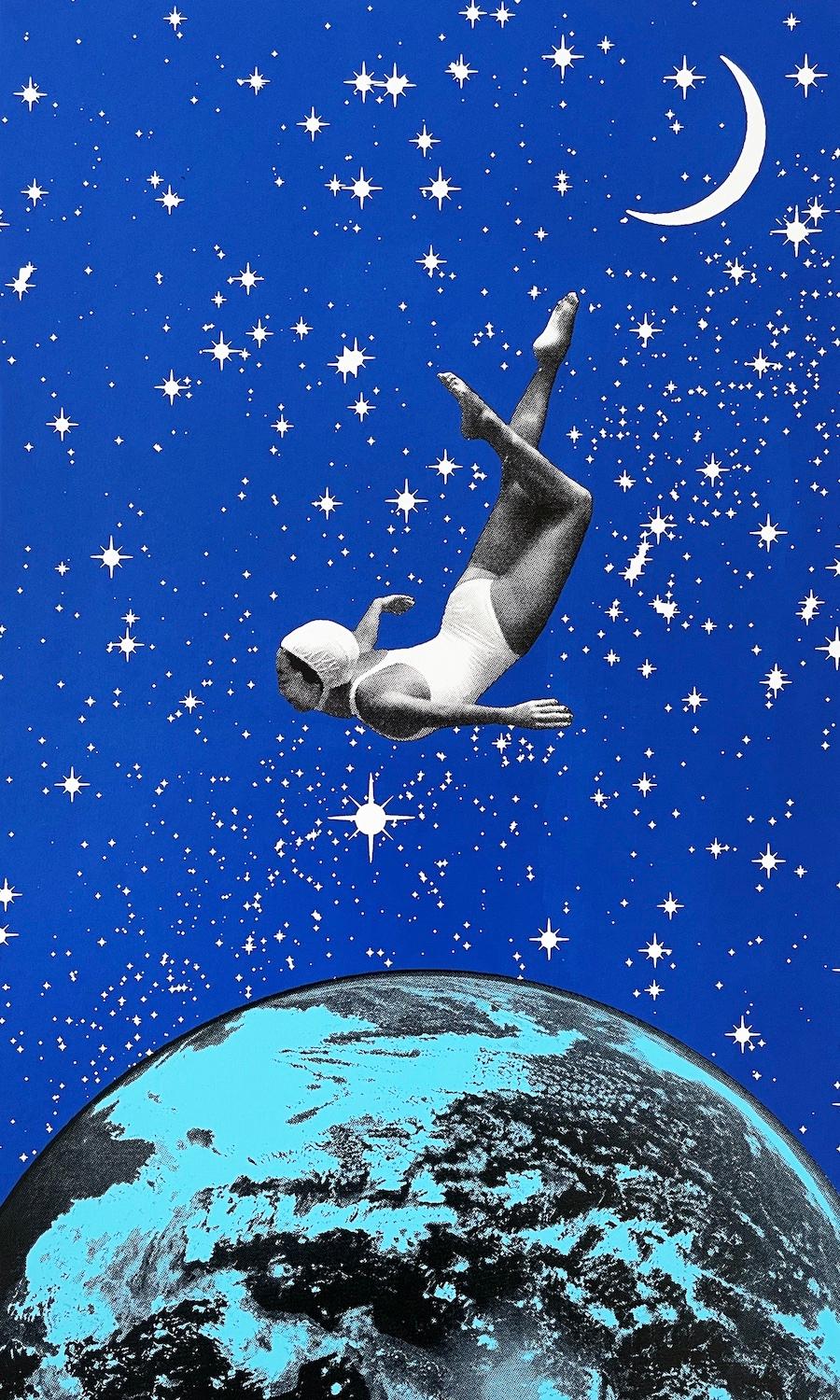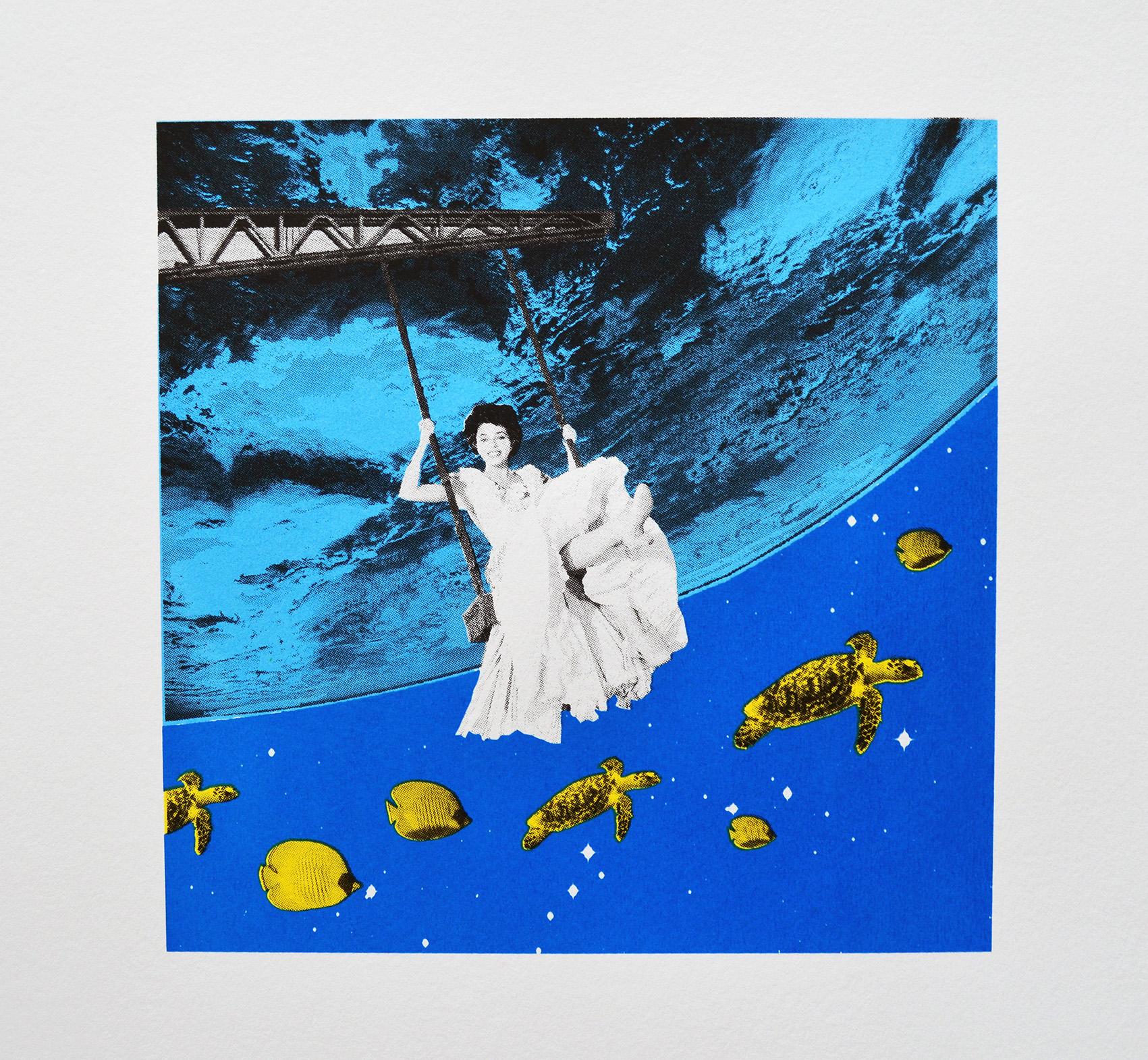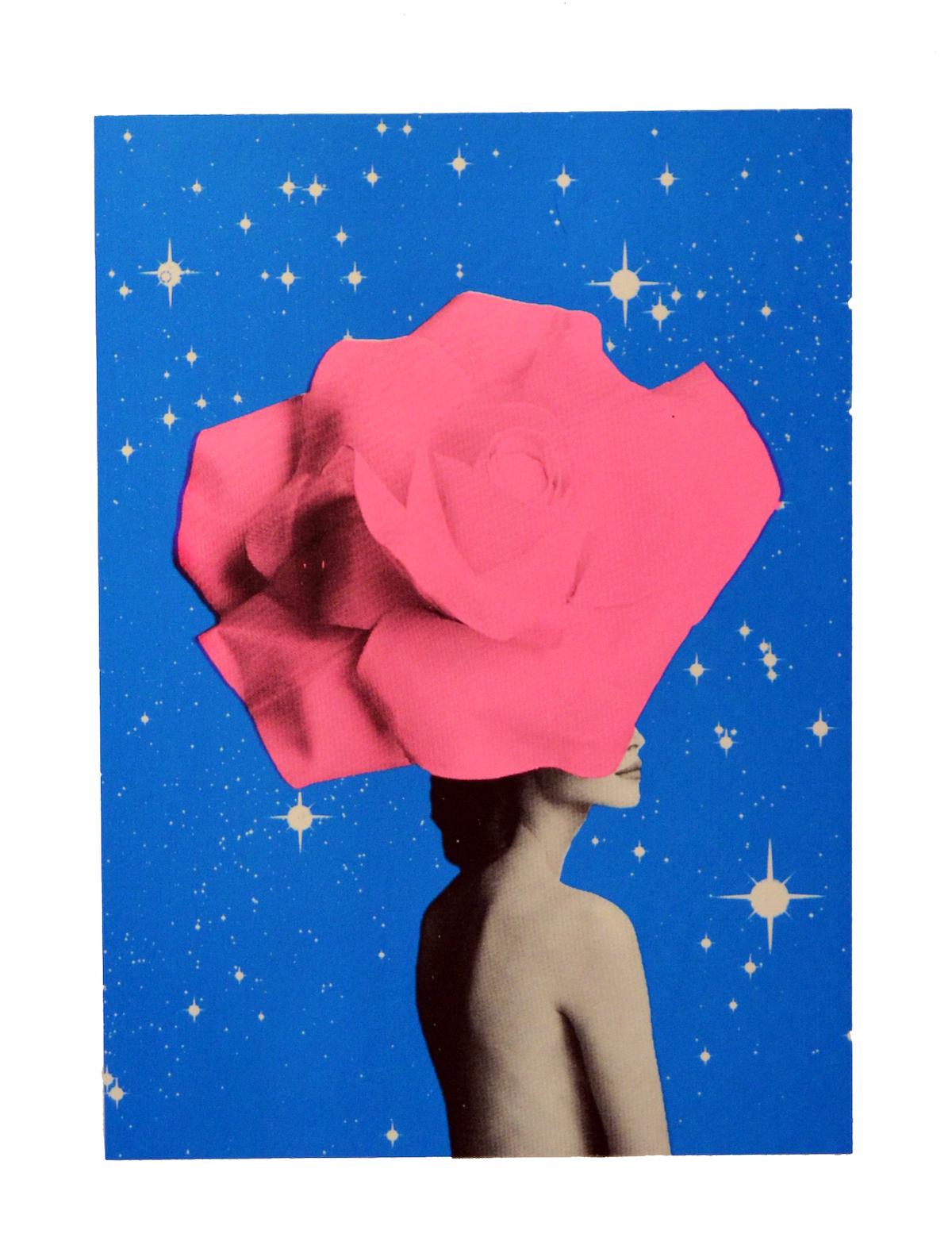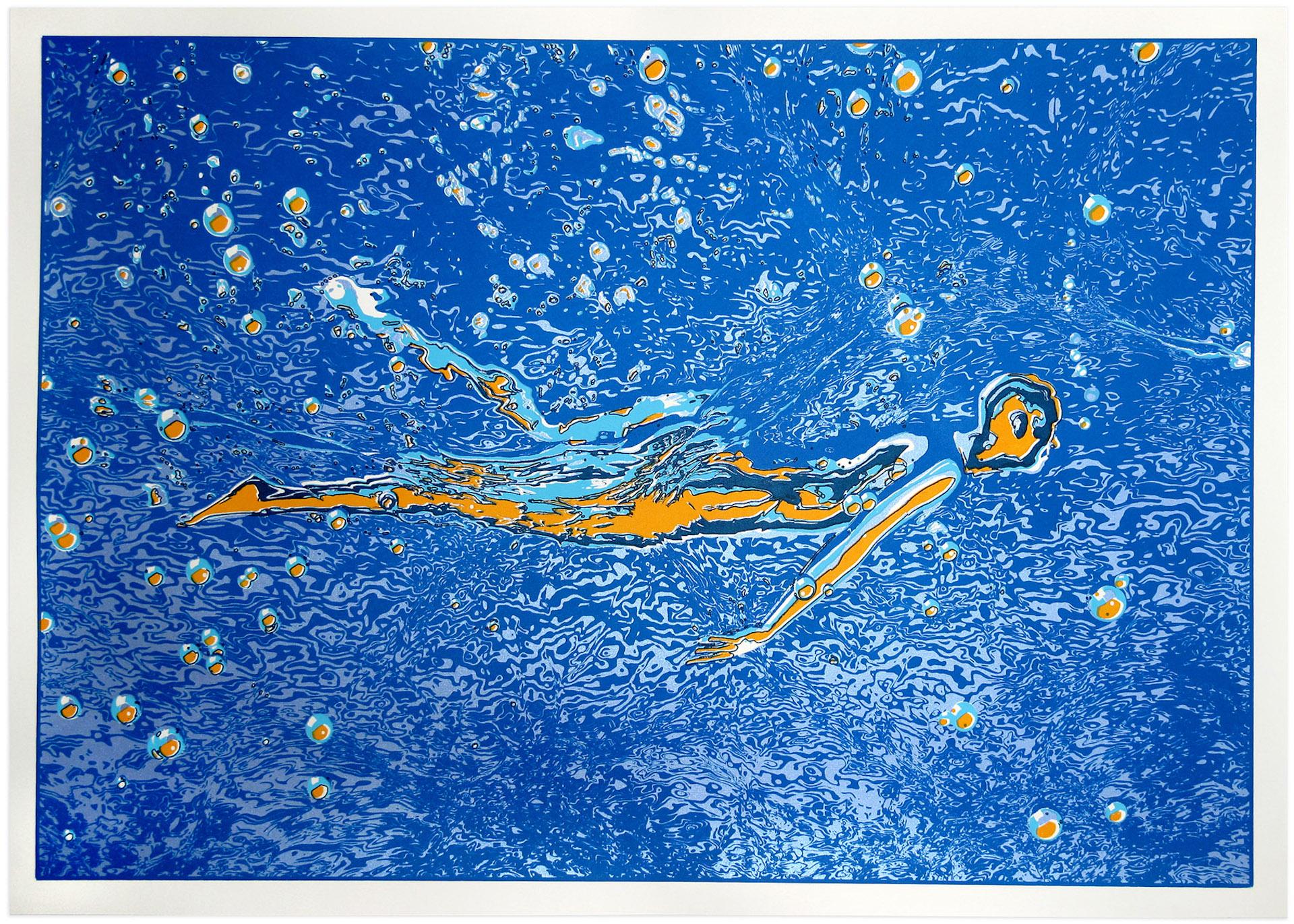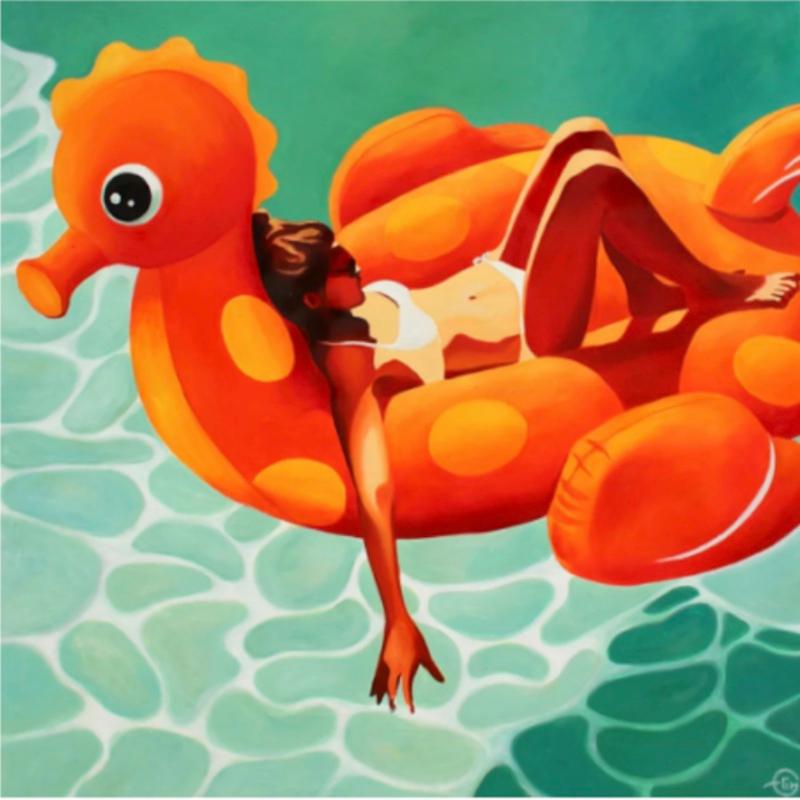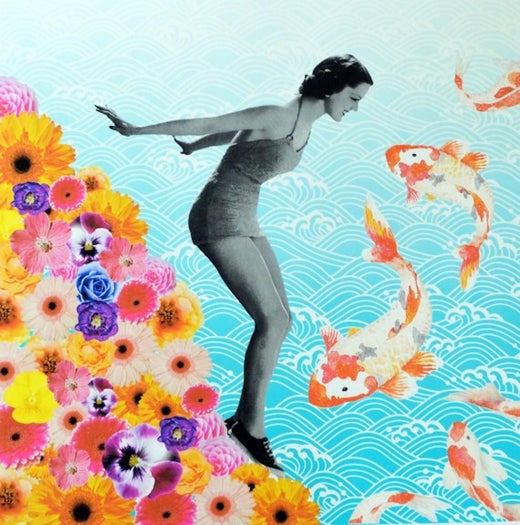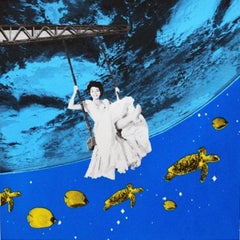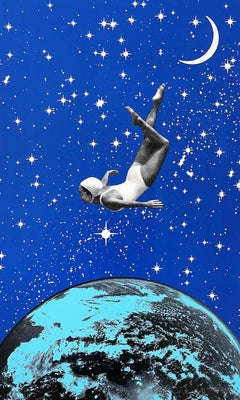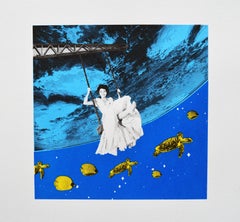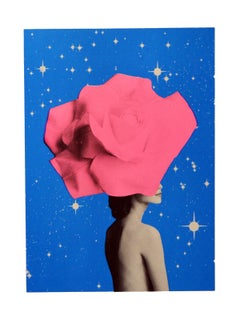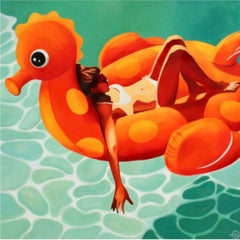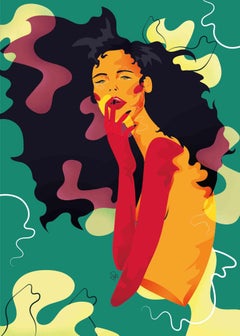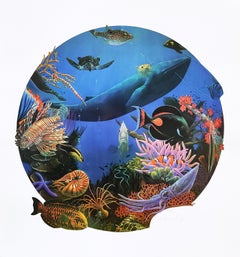Items Similar to Anne Storno, Water Baby, Affordable Art, Colourful Art Limited Edition Print
Want more images or videos?
Request additional images or videos from the seller
1 of 10
Anne StornoAnne Storno, Water Baby, Affordable Art, Colourful Art Limited Edition Print
$438.45
£320
€373.26
CA$600.57
A$667.97
CHF 348.79
MX$8,128.44
NOK 4,454.60
SEK 4,177.63
DKK 2,785.80
Shipping
Retrieving quote...The 1stDibs Promise:
Authenticity Guarantee,
Money-Back Guarantee,
24-Hour Cancellation
About the Item
Anne Storno
Water Baby
A limited edition of 30.
Image Size: H:50 cm x W:50 cm
Paper Size: H60cm x W60cm
Sold Unframed
Please note that in situ images are purely an indication of how a piece may look.
A bright and colourful hand made screen print, printed in London in 2019.
Anne Storno surreal screenprints are colourful and vibrant offering affordable art for sale. Anne Storno says: "I am a printmaker and mixed media artist based in London. I rely on photography, drawing, paint and collage to explore the world around me. In my artworks, images are combined, removed from their original narrative context and reconfigured into a new scenario. Some of my works are based on collages, transformed into a hand made screen print. I appreciate the messiness of sticky glue, soggy paper and the unpredictable nature of the final product. I am interested in working on the boundaries between collage and technology. My visual language embraces the brightness of Pop art. I like the screen printing media because it is no longer confined to a simple impression on paper, it offers artists a way to experiment and fail, to test colour relationships and play with ideas. Often appropriating visual themes and incorporating these as printed motifs, I adopt a playful approach in my practice. Inspiration is found in my surroundings: colours, lines, shapes and patterns that can be found in cities, design and fashion and try to find humour in day to day life.I am inspired also by pets and their special place in our family life."
- Creator:Anne Storno (British)
- Dimensions:Height: 23.63 in (60 cm)Width: 23.63 in (60 cm)
- Medium:
- Movement & Style:
- Period:
- Condition:
- Gallery Location:Deddington, GB
- Reference Number:1stDibs: LU63238774732
Anne Storno
Anne Storno art for sale online in limited edition screen prints prints with free delivery internationally. Anne Storno surreal screenprints are colourful and vibrant offering affordable art for sale. Anne Storno says: "I am a printmaker and mixed media artist based in London. I rely on photography, drawing, paint and collage to explore the world around me. In my artworks, images are combined, removed from their original narrative context and reconfigured into a new scenario. Some of my works are based on collages, transformed into a hand made screen print. I appreciate the messiness of sticky glue, soggy paper and the unpredictable nature of the final product. I am interested in working on the boundaries between collage and technology.
About the Seller
5.0
Platinum Seller
Premium sellers with a 4.7+ rating and 24-hour response times
Established in 2014
1stDibs seller since 2017
1,282 sales on 1stDibs
Typical response time: 1 hour
- ShippingRetrieving quote...Shipping from: Deddington, United Kingdom
- Return Policy
Authenticity Guarantee
In the unlikely event there’s an issue with an item’s authenticity, contact us within 1 year for a full refund. DetailsMoney-Back Guarantee
If your item is not as described, is damaged in transit, or does not arrive, contact us within 7 days for a full refund. Details24-Hour Cancellation
You have a 24-hour grace period in which to reconsider your purchase, with no questions asked.Vetted Professional Sellers
Our world-class sellers must adhere to strict standards for service and quality, maintaining the integrity of our listings.Price-Match Guarantee
If you find that a seller listed the same item for a lower price elsewhere, we’ll match it.Trusted Global Delivery
Our best-in-class carrier network provides specialized shipping options worldwide, including custom delivery.More From This Seller
View AllAnne Storno, Aquarium, Limited Edition Prints, Surrealist Screen Print, Pop Art
By Anne Storno
Located in Deddington, GB
Anne Storno
Aquarium
Limited Edition
Edition of 14
Image Size: 26 x 26 cm
Paper Size: 50 x 50 cm
Sold Unframed
Please note that in situ images are purely an indication of how a piece may look.
A limited edition, hand printed screen print, made in England. This work is inspired by collage and surrealist artworks. I like combining images removed from their original narrative context and reconfigured into a new scenario. Aquarium is mixing an old image of Joan Collins, the actress, with a view of the earth from space...
Category
21st Century and Contemporary Pop Art Abstract Prints
Materials
Archival Paper, Screen
Weightless, Anne Storno, Contemporary art, Limited edition print, Contemporary
By Anne Storno
Located in Deddington, GB
Weightless [2022]
limited_edition and hand signed by the artist
Screenprint
Edition number 30
Image size: H:60 cm x W:37 cm
Complete Size of Unframed Work: H:70 cm x W:50 cm x D:0.5...
Category
21st Century and Contemporary Contemporary Landscape Prints
Materials
Paper, Screen
Aquarium
By Anne Storno
Located in Deddington, GB
Anne Storno – Aquarium
– A limited edition, hand printed screen print, made in England.
– This work is inspired by collage and surrealist artworks. I like combining images removed from their original narrative context and reconfigured into a new scenario. Aquarium is mixing an old image of Joan Collins, the actress, with a view of the earth from space...
Category
2010s Pop Art Figurative Prints
Materials
Paper, Screen
The Secret Woman, Anne Storno, Contemporary figurative art, Handmade print
By Anne Storno
Located in Deddington, GB
The Secret Woman by Anne Storno [2017]
Limited edition print and hand signed by the artist
Screeprint on Paper
Image size: H:50cm x W:40cm
Complete size of unframed work: H:50cm x...
Category
21st Century and Contemporary Contemporary Landscape Prints
Materials
Paper, Screen
Swimmer BY CHRIS KEEGAN, Limited Edition Contemporary Print, Affordable Artwork
By Chris Keegan
Located in Deddington, GB
Chris Keegan
Swimmer
Limited Edition Silkscreen Print
Limited Edition of 50
Size: H 40cm x W 56cm x D 0.1cm
Sold Unframed
Please note that insitu images a...
Category
21st Century and Contemporary Contemporary Figurative Prints
Materials
Paper, Screen
Anne Storno, Balloons, Limited Edition Print, Surrealist Inspired Art,
By Anne Storno
Located in Deddington, GB
Anne Storno
Balloons
Limited Edition Print
Screenprint on Paper
Edition of 13
Image Size: H:50 cm x W:33 cm
Paper Size: H:70 cm x W:50 cm
Sold Unframed
Please note that in situ image...
Category
21st Century and Contemporary Contemporary Landscape Prints
Materials
Paper, Screen
You May Also Like
Childhood
Located in New York, NY
Unstretched print on Canvas, shipped and rolled in a tube.
Emilie Arnoux hails from Normandy, France. From a young age, she became fascinated by the oc...
Category
2010s Contemporary Figurative Prints
Materials
Canvas, Cotton Canvas, Archival Ink
Price Upon Request
Clara - Giclée Print by Sara Franzese - 2022
Located in Roma, IT
llustration on paper (giclée print) realized by the Italian artist Sara Franzese in 2022.
Edition of 5. Hand-signed and numbered
"Your soul is full of sunshine. Clara"
Category
2010s Contemporary Figurative Paintings
Materials
Giclée
French Contemporary Art by Claudine Loquen - Clotilde Reine des Francs
Located in Paris, IDF
Claudine Loquen is a French artist born in 1965 who lives & works in Paris, France. She depicts portraits, especially women faces as Colette for literature.
About artwork : numbere...
Category
2010s Contemporary Figurative Prints
Materials
Etching, Handmade Paper
WATER'S EDGE
By Charles Lynn Bragg
Located in Aventura, FL
Hand signed and numbered by the artist. Image radius approx 24 inches. From the main edition of 300.
Artwork is in excellent condition. Certificate of Authenticity is included. All...
Category
Late 20th Century Contemporary Figurative Prints
Materials
Paper, Lithograph
$150 Sale Price
50% Off
Contemporary British Print by Jane Ward - Of Air, Earth and Water 2
By Jane Ward
Located in Paris, IDF
Digital print on canvas with dissolved ink and pigments, edition 1/5, 80 x 120 x 3 cm, 2018
Jane Ward is a British artist born in 1960 who lives & works in Lake District National Pa...
Category
2010s Contemporary Figurative Prints
Materials
Ink, Canvas, Pigment, Digital
$1,534 Sale Price
20% Off
In the water. Figurative Acrylic Painting, Minimalism, Pop art, Polish art
By Joanna Woyda
Located in Warsaw, PL
Contemporary figurative acrylic on canvas painting by Polish artist Joanna Woyda. Painting is in minimalistic, pop art style. The artwork depicts a boy standing in the water. He is v...
Category
2010s Pop Art Figurative Paintings
Materials
Canvas, Acrylic
More Ways To Browse
Water Baby
Martin Lewis On Sale
Metka Krasovec
Mosaic Skull
Mr Brainwash Pele
Mucha Hamlet
Murakami Enso
Nan Goldin Prints Poster
Nechita Peace
Paul Klee On Sale
Paul Mohr
Peter Doig Fisherman
Peter Max Cosmic Jumper
Peter Max Cosmic Runner
Picasso Picador Et Taureau
Picasso Toro Y Toreros 1959
Pietro Santi Bartoli
Piranesi Appia
